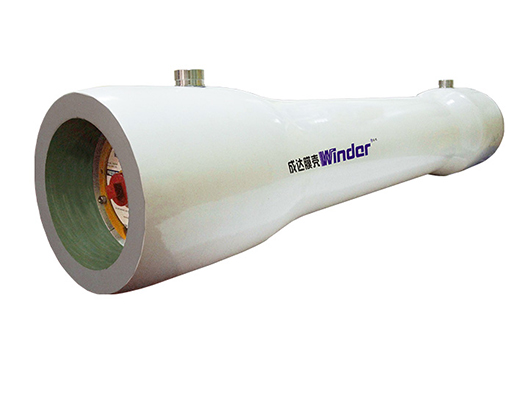Seawater desalination (also known as seawater desalination) is the process of separating salt and water in seawater. Desalination can be achieved by removing water from seawater or removing salt in seawater. The methods of sea water desalination are basically divided into these two categories.
Among them, the large-scale commercial applications are reverse osmosis, electrodialysis, and distillation.
(1) Reverse osmosis (RO)
Driven by pressure, the freshwater in the seawater enters the low-pressure side of the membrane through the semipermeable membrane, while other components (such as salt) in the seawater are blocked on the high-pressure side of the membrane and discharged with the concentrated seawater, so as to achieve effective separation. When seawater is desalinated, if an external pressure greater than the osmotic pressure of the seawater is applied to the seawater side, the pure water in the seawater will reversely permeate into the freshwater. This is the principle of reverse osmosis desalination. In order to obtain the necessary desalination rate, the actual operating pressure is greater than 5.5 MPa.
Reverse osmosis, usually also called ultrafiltration, is a membrane separation desalination method that was adopted only in 1953. This method uses a semi-permeable membrane that allows only solvents to pass through but not solutes to separate seawater from freshwater. Under normal circumstances, freshwater diffuses to the seawater side through the semi-permeable membrane, so that the liquid level on the seawater side gradually rises until a certain height is reached. This process is permeation. At this time, the static pressure of the water column above the seawater side is called osmotic pressure. If an external pressure greater than the osmotic pressure of the seawater is applied to the seawater side, the pure water in the seawater will reverse osmosis into the freshwater. The biggest advantage of reverse osmosis is energy saving. Its energy consumption is only 1/2 of electrodialysis and 1/40 of distillation. Therefore, since 1974, developed countries such as the United States and Japan have successively shifted their development to reverse osmosis.
Reverse osmosis membrane pressure vessels have developed rapidly, and the engineering cost and operating cost continue to decrease. The main development trend is to reduce the operating pressure of the reverse osmosis membrane, increase the recovery rate of the reverse osmosis system, and increase the efficiency of low-cost and efficient pretreatment technology. System anti-pollution ability, etc.

Reverse Osmosis Membrane Pressure Vessels
(2) Electrodialysis (Electrodialysis, ED)
Under the action of a direct current electric field, ions migrate through the selective ion exchange membrane, thereby partially separating electrolyte ions from the solution, which is called electrodialysis.
The key technology of this method is the development of a new type of ion exchange membrane. The ion exchange membrane is a functional membrane with a thickness of 0.5-1.0mm, which is divided into positive ion exchange membrane (positive membrane) and negative ion exchange membrane (anionic membrane) according to its selective permeability. The electrodialysis method is to alternately arrange the positive and negative membranes with selective permeability to form multiple independent compartments. The seawater is desalinated, while the seawater of the adjacent compartments is concentrated, and the freshwater and the concentrated water are separated. The electrodialysis method can not only desalinate seawater but also can be used as a means of water quality treatment to contribute to the reuse of sewage. In addition, this method is increasingly used in concentration, separation, and purification in the chemical, pharmaceutical, and food industries.
(3) Distillation
The seawater desalination principle of the distillation method is simple, that is, the seawater is heated, and freshwater is obtained after the steam is condensed. The distillation method is divided into multi-stage flash distillation (MSF), multiple-effect distillation (MED), and vapor compression distillation (Vaporcom-pression, VC) according to the different energy sources, equipment and processes used. Among them, the low-temperature multi-effect operation is performed below 70 ℃, which is far lower than the steam temperature of about 110 ℃ in multi-stage flash evaporation, which effectively avoids the scaling of inorganic salts. It is currently one of the most suitable evaporation technologies. At the same time, it can use various forms of low-level heat sources, such as combined with thermal power plants or nuclear power plants and use the back pressure of steam turbines of 0.02~0.04MPa (absolute pressure) to pump water to reduce power generation losses and improve the efficiency of generator sets.
(4) Low temperature and multi-effect
Multi-effect evaporation is to evaporate the heated seawater in multiple evaporators in series. The vapor evaporated from the previous evaporator is used as the heat source of the next evaporator and condenses into freshwater. Among them, low-temperature multi-effect distillation is one of the most energy-saving methods in distillation. Due to energy-saving factors, low-temperature multi-effect distillation technology has developed rapidly in recent years. The scale of the device is increasing, and the cost is decreasing. The main development trend is to improve the single-machine water production capacity of the device, use cheap materials to reduce engineering costs, increase operating temperature, and improve heat transfer efficiency Wait.
(5) Multi-stage flash evaporation
The so-called flash evaporation refers to a phenomenon in which part of the seawater evaporates suddenly when the pressure of seawater at a certain temperature drops suddenly. Multi-stage flash seawater desalination is to evaporate heated seawater in multiple flash chambers with gradually decreasing pressure and condense the steam to obtain fresh water. At present, the global seawater desalination plant still has the largest output by the multi-stage flash method, the most mature technology, high operational safety, and flexibility. It is mainly constructed in conjunction with thermal power stations and is suitable for large and ultra-large desalination plants, mainly used in Gulf countries. Multi-stage flash evaporation technology is mature and reliable in operation. The main development trend is to improve the single-machine water production capacity of the device, reduce unit power consumption, and improve heat transfer efficiency.